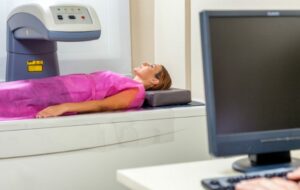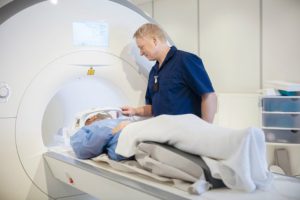The Importance of Self Breast Exams
Many physicians and radiologists the world over agree that self breast exams can be instrumental in assisting with early breast cancer detection.

The Importance of Self Breast Exams
Many physicians and radiologists the world over agree that self breast exams can be instrumental in assisting with early breast cancer detection. Once a month is the recommended frequency, and a self breast exam can be done easily, at home, and takes only about 5 minutes of your time. For women with a family history of breast cancer, self exams are vital, as are regular mammogram and ultrasound scans after a certain age. But for all women, becoming familiar with your own body and self-monitoring for any changes can help you detect any problems as soon as they become apparent.
How To Perform a Self Breast Exam
A self breast exam only requires a few minutes of your time. Many physicians recommend performing the exam while you’re in the shower, but there are a few different methods and positions you can use to examine yourself. The National Breast Cancer Foundation in the US provides a comprehensive explanation of self breast exams. To check your breasts, first do a visual inspection. It is important to look for any visible changes in the breast shape or tissue, particularly any dimpling or changes affecting only one breast or one side. Following this, you can perform a manual exam. Pressing your fingers gently but firmly, move them in a circular pattern starting from the outside of the breast and working your way inward. As you feel, take note of anything which feels unusual, hard, or lumpy. Make sure to examine your armpits for any signs of lumps or changes as well.
What if I Find a Lump?
If you detect a lump or notice any other changes or abnormalities in your breasts, you should consult with a physician. The majority of lumps prove noncancerous, and getting more comprehensive exams can help set your mind at ease or, in the event that you do require some treatment, get you started as soon as possible.
If your physician recommends diagnostic scans to examine a lump, you will probably begin with a basic breast ultrasound. Painless and completely noninvasive, ultrasound can be effective in determining the density of any mass found in the breast tissue. There is no radiation associated with this scan. The ultrasound can indicate whether further tests are needed.
Breast MRI and mammography are other diagnostic options which may be employed if your physician and radiologist find it necessary. At Vision XRAY, we always strive to perform only those scans and tests which are most necessary and best recommended for each particular case.
A Focus on Regular Exams
Self breast exams, while important, are not a foolproof or fully effective method of diagnosis. The recommendation to perform them regularly emphasises the importance of becoming familiar with one’s own breast tissue, resulting in better, faster recognition when something may be wrong, or when changes appear. This can lead to more rapid diagnosis and treatment in some cases. However, self breast exam is no substitute for the inspection and guidance of a qualified physician. In addition to examining your breasts frequently, leading research recommends your breasts be examined by a doctor every 1-3 years (once per year after the age of 40). With regular, comprehensive checkups, you can feel secure about the health of your breasts.
For more information about self breast exams, breast ultrasound, mammography, and MRI, or to learn more about our dedicated Australian Breast Centres, please contact us at Vision XRAY today. We will be happy to speak with you and address any concerns regarding breast health.
Read our articles and FAQs
We’re delighted to provide updates on the latest medical imaging technology and answer your most frequently asked questions about our services.









